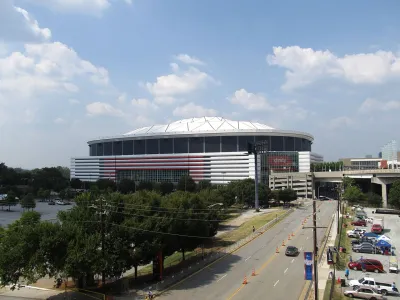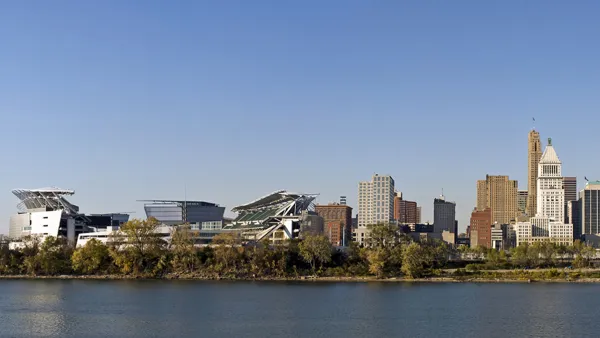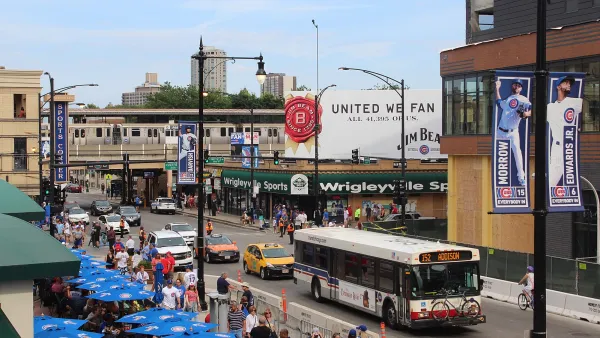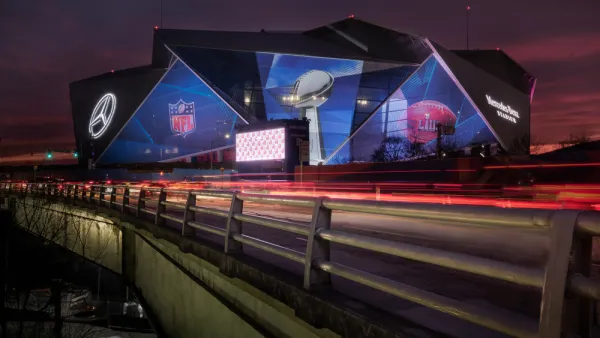In Atlanta—and throughout the country—city politicians have proven willing and eager to support stadium construction. But though these facilities are marketed as economic drivers, they often cause steep declines instead.

Stadium construction often depends on public funds and a good dose of city pride. "And yet the consensus among economists says that the public rarely profits from these massive investments, despite persistent claims by politicians and heads of chambers of commerce that stadiums and their ilk generate economic growth."
Atlanta's history of public investment in stadiums calls their "benefits" into question. "In Atlanta, four stadiums––two for baseball and two for football––have [...] actually contributed significantly to the de-development of what were once thriving middle and working class Black communities."
Lacking political visibility, communities around planned stadiums find it difficult to oppose the projects. The Atlanta-Fulton County Stadium, for example, was "paid for with parks and recreation tax dollars and built on land taken from owners through a federal urban renewal program. Construction of the Atlanta-Fulton County Stadium wiped out an entire neighborhood [...]"
When a new stadium appears, the surrounding neighborhood can become mere support structure. "Even after construction was completed, many people were displaced as landlords found it more profitable to evict families, tear down houses, and operate ad hoc parking lots where homes used to be. And once construction jobs dried up what was left were low-paying service industry jobs."

National Parks Layoffs Will Cause Communities to Lose Billions
Thousands of essential park workers were laid off this week, just before the busy spring break season.

Retro-silient?: America’s First “Eco-burb,” The Woodlands Turns 50
A master-planned community north of Houston offers lessons on green infrastructure and resilient design, but falls short of its founder’s lofty affordability and walkability goals.

Delivering for America Plan Will Downgrade Mail Service in at Least 49.5 Percent of Zip Codes
Republican and Democrat lawmakers criticize the plan for its disproportionate negative impact on rural communities.

Test News Post 1
This is a summary

Test News Headline 46
Test for the image on the front page.

Balancing Bombs and Butterflies: How the National Guard Protects a Rare Species
The National Guard at Fort Indiantown Gap uses GIS technology and land management strategies to balance military training with conservation efforts, ensuring the survival of the rare eastern regal fritillary butterfly.
Urban Design for Planners 1: Software Tools
This six-course series explores essential urban design concepts using open source software and equips planners with the tools they need to participate fully in the urban design process.
Planning for Universal Design
Learn the tools for implementing Universal Design in planning regulations.
EMC Planning Group, Inc.
Planetizen
Planetizen
Mpact (formerly Rail~Volution)
Great Falls Development Authority, Inc.
HUDs Office of Policy Development and Research
NYU Wagner Graduate School of Public Service





























